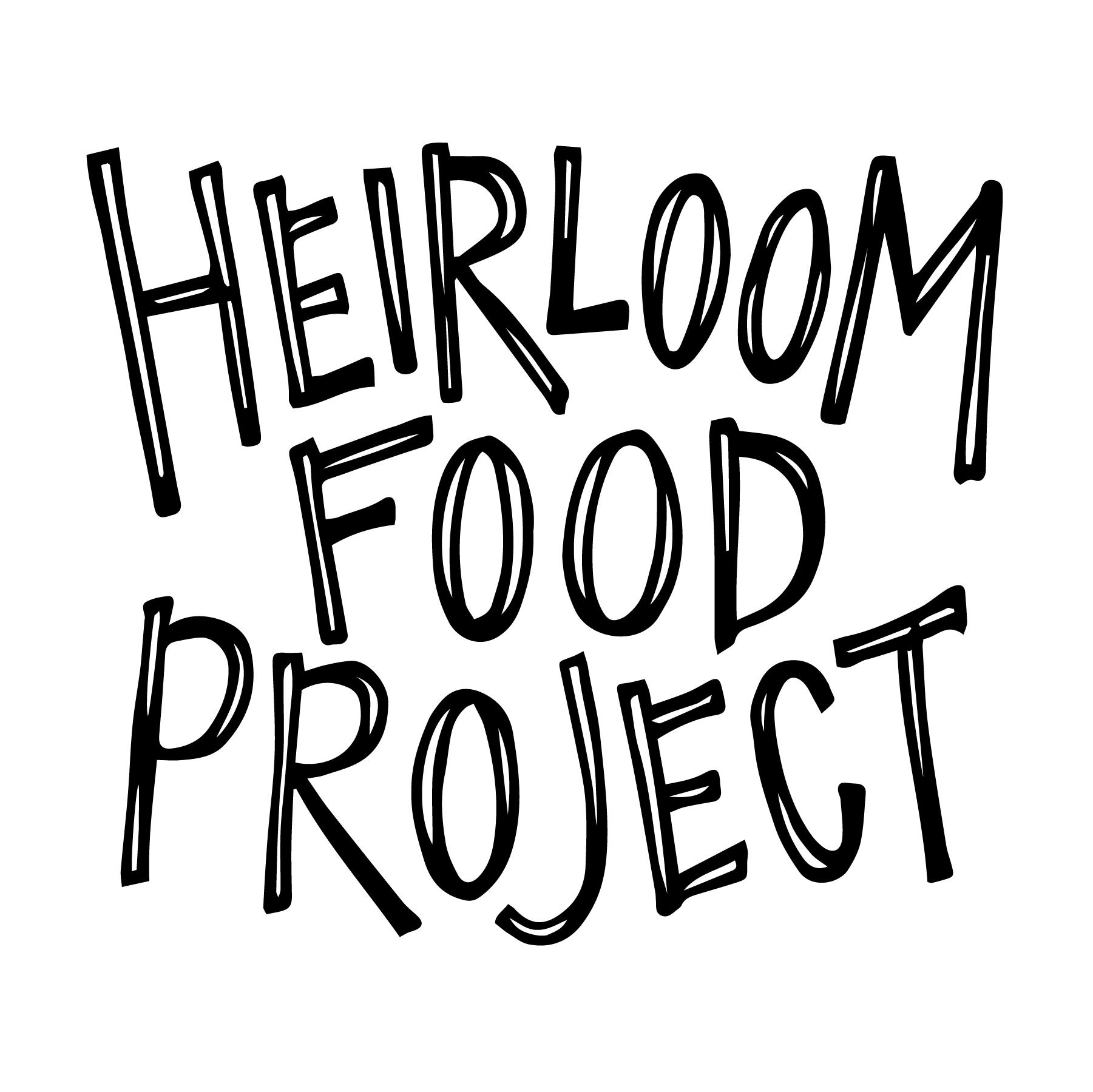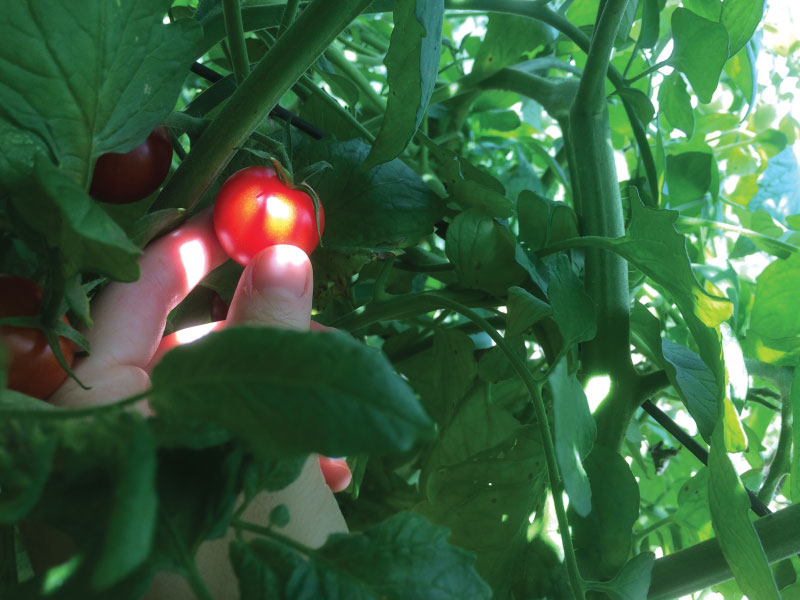Tomato: make time for traditions
For me, the tomato will always be inextricably linked to my family’s annual tomato canning tradition.
Every year around Labor Day, we’d gather around bushels of plum tomatoes and get to work. It’s a long process—one that’s best done in the company of others. In this case, many hands make (lighter, but not exactly) light work.
Tomatoes are also one of my most potent examples of the connection between memory and sense of smell. I swear, the aroma from the huge stockpots of simmering tomato puree on that one Sunday in September seeps into the walls of my grandma’s basement and kitchen, and continually releases that sweet, acidic scent throughout the year.
More than that—what stops me in my tracks every time is the smell of tomato vines. To me, that’s the pure essence of tomato season. At the risk of sounding quite strange, I’ll share with you that every time I encounter a tomato plant—whether it’s a start ready to be planted or a vine spilling out over a neighbor’s fence—I rub the leaves between my fingers and smudge the scent under my nose where it lingers for awhile. It’s like my own essential oil.
These memories are so fresh, so palpable, so transporting. And I’m not just waxing poetic with no backup. Edible memory is a real, researched-and-written-about thing. It’s strong. It pulls us back to center. It connects us with times and places and people past.
Speaking of memory, do you remember where the tomato originated? I didn’t until I snagged a copy of 100 Great Pasta Dishes by Ann and Franco Taruschio for some light bedtime reading. Hint: it’s not Italy. Maybe it’s because of my ancestry, but I always thought it was. In reality, just like the potato, it’s from the Andes in South America.
Here’s Ann and Franco’s summary on the history of the tomato:
“It was brought to Europe from the Americas in the sixteenth century. In 1554, botanist Pietro Andrea Mattioli from Siena was the first Italian to write about it. He gave a description of the fruit, which was originally yellow in colour, and named it Mala aurea (Latin) and pomo d’oro—golden apple…It was not until the second half of the eighteenth century that the tomato started to appear in Italian recipes for sauces and it was still later, in the 1830s, that the alliance of pasta and tomatoes was created. This was followed in the second half of the nineteenth century by that other famous alliance of tomatoes and pizza.”
For as much as I can drone on and on about the importance of food traditions, I do not have a perfect record of upholding them.
In fact, the way I felt after letting a tradition slip by unhonored is what drives me to make the plea.
Last year at this time I snapped to the realization that tomato season was almost over, and I hadn’t yet sauced and jarred them. More importantly, I hadn’t organized any friends to come over and help, nor had I reserved the very crucial, time-saving food mill from the kitchen tool library.
My housemates, including my husband, were gone for the weekend, but I pressed on, by my lonesome, to cut, simmer, sieve, boil, and jar 40 pounds of tomatoes. A few pounds in and I was already sweating. I tried to move quickly and to remember all that needed remembering, but before I knew it, I burned one large pot full of precious, hard-won puree. I almost quit out of sorrow and exhaustion on the spot.
A similar scenario went down a few Easters ago. My family makes “passatelle,” or as it’s lovingly known to us, “worm soup,” to mark the occasion each year. We mix breadcrumbs, eggs, cheese, lemon zest, and a dash of nutmeg together and run it through a sausage grinder to form delightfully imperfect noodles. They’re cooked in a pot of scratch-made chicken broth. Steaming bowls of the stuff are finished with a healthy sprinkling of parmesan cheese. It’s not Easter without “worm soup.”
When I was still freshly removed from Ohio and newly planted in Portland, I made this soup and shared it with friends on Easter Sunday. It was lovely—I remember being so glad I’d carved out the time to do it.
A year passed, and, as if my edible memory had been replaced with edible amnesia, I declared myself “too busy” to make the soup due to a series of events that no longer matter. Easter came, and it went, unmarked by the ceremonious slurping of worm soup.
It seemed ok. I was ok. Wasn’t I?
But the following week, I felt a bit ‘off,’ as if a part of me had been left unfilled. I was a little less whole and a little less rich. In that sadness, I swore that next year—no matter what—I would be making that soup.
And I did. And I felt so happy and so whole.
But can you guess what happened the next year? Yep, I just simply did not have the time. It was “no big deal.” I had “a lot on my plate.” So again, Easter came and went, with no appearance from the soup. Again, I felt the sadness. This time, a little anger was thrown in the mix, because I should have learned my lesson already.
If nothing else, writing this essay is my big, fat “note to self.”
Dear self,
These traditions are immensely important to your wellbeing. They’re essential, really. More essential than (most) anything else you’re putting above them. Make the time. You’ll be glad you did.
Love,
Gina
Do you think this forgetting happens on a cultural level?
I think so. I believe that each time a tradition goes unhonored, some piece of our culture dies with it. I believe we carry with us a quiet burden of sadness about this, but we don’t know it.
All the individual pains from each small forgotten tradition may not be immediately felt, but in the end, I imagine we’ll feel a lot like I did that first Easter I skipped out on worm soup: sort of ok, but less whole—less rich.
Make time for tradition.
For the first time in a long while, I found myself in Ohio with my family this August. I hadn’t participated in the annual canning with them in years, and we realized that we just might have the chance to do it together. We began seeking out bushels of plum tomatoes—three weeks earlier than normal—to see if there was any chance we’d find them.
All of us took turns to call farm stands and produce markets. We received a lot of no’s, and it looked like we wouldn’t be able to pull it off. But, after some scrambling, a mere three days before canning Sunday my stepmom came up victorious. She found a market that had plenty of Romas for us.
It was on.
All the photos in this story are from this year’s canning day (well, except for one throwback shot…see if you can spot it). My husband Bjarke joined us for the first time, and my heart expanded through sharing it with him.
Practice this in your own kitchen: uphold an old tradition or start a new one.
dust off a recipe from the family archives and make it
begin keeping a sourdough starter that you can share and pass down
start or pick back up a preserving technique like canning, drying, or pickling—now is a great time of year for that
perfect a recipe that you really enjoy and share it with someone you love
check in with yourself before you forego a culinary tradition in the future. Is the alternative really that important? How can you make the time?
I don’t want to paint an overly rosy picture; canning tomatoes doesn’t solve all of my problems, or my family’s, or the world’s. But each time it happens, I feel lifted by a subtle joy. I am nourished. I am whole.
And I want the same for you.
Heirloom Food Stories aim to connect you to beauty, wisdom, and intuition in your kitchen. Each month we’ll deeply explore one fruit or vegetable, so we can know the whole stories — the joys, hardships, and curiosities — behind the foods on our plates.
If you liked these stories, you might really enjoy my offering in partnership with The Recipe Hunters, Heirloom Mail. It’s a monthly “food learning adventure in a box” that highlights one handpicked (surprise!) ingredient with art, stories, and cultural wisdom behind it. You’ll learn and grow as a home cook, one ingredient at a time. Check out more details and subscribe here.







